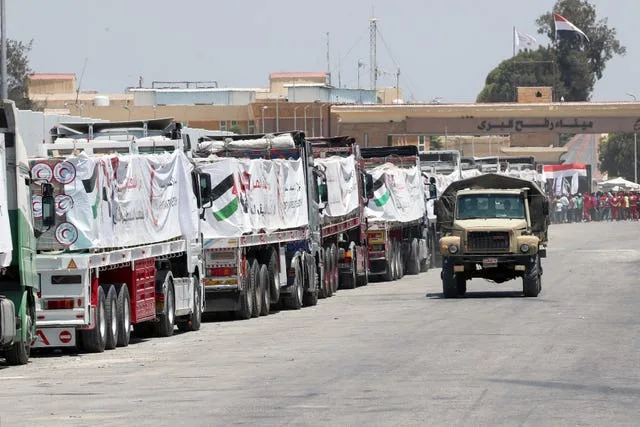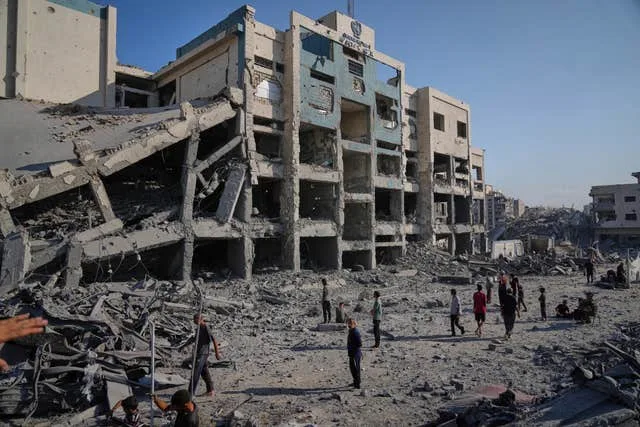At least 38 Palestinians were reported dead between Tuesday night and Wednesday in the Gaza Strip while trying to access humanitarian aid, according to health authorities in the area. The deaths occurred near United Nations aid convoys and facilities operated by the Gaza Humanitarian Foundation (GHF), an American contractor backed by Israel.
The Israeli military acknowledged firing warning shots when large groups of Palestinians approached its personnel but claimed it was unaware of resulting casualties.
The fatalities come as Israeli Prime Minister Benjamin Netanyahu is expected to unveil additional military plans, potentially including a full-scale reoccupation of Gaza. Analysts warn that such a move could worsen the humanitarian disaster in the besieged enclave, where over two million Palestinians are already facing famine conditions due to the prolonged blockade and ongoing conflict. It may also endanger the remaining Israeli hostages and trigger widespread condemnation both within Israel and abroad.

Far-right members of Netanyahu’s coalition have consistently advocated for expanding the war, including permanent Israeli control over Gaza, the displacement of its population, and the re-establishment of Jewish settlements in the territory.
In Washington, former President Donald Trump, when asked on Tuesday about the prospect of Israel reoccupying Gaza, said he was not aware of the proposal but suggested the decision was “up to Israel.”
Health officials said 28 Palestinians were killed in the Morag Corridor, a southern Gaza military zone under Israeli control. This area has seen repeated chaos in recent days as aid convoys were overwhelmed by crowds, with witnesses reporting Israeli forces opening fire. The military said it only fired warning shots to disperse people approaching their positions.

Nasser Hospital received 28 bodies from the Morag Corridor, as well as four more victims from the Teina area—where aid seekers were heading toward a GHF-run distribution center. In central Gaza, Al-Awda Hospital reported six additional deaths near another GHF site.
Separately, 12 more Palestinians were killed in airstrikes, according to both hospitals.
The GHF, for its part, denied that any violent incidents took place near its facilities. It also claimed that its security personnel used only non-lethal crowd control methods—such as pepper spray and firing into the air—to prevent stampedes.
The Israeli military said its operations aim to avoid civilian casualties, blaming Hamas for embedding fighters in densely populated areas.
The GHF centers were established in May with Israeli approval, following a two-and-a-half-month blockade during which no food, medicine, or humanitarian supplies were allowed into Gaza. Israeli and American officials argued that a new aid system was necessary to prevent Hamas from diverting supplies.
However, the United Nations rejected the system, arguing it endangers civilians by forcing them to travel long distances through conflict zones and gives Israel excessive control over who receives aid. Critics say the arrangement could be used to further displace Palestinians and reshape Gaza’s demographics.

The UN human rights office recently reported that since May, around 1,400 Palestinians have been killed while attempting to access aid—mainly near GHF sites and UN convoy routes. The majority of those deaths, the UN says, were caused by Israeli gunfire.
A group of independent UN experts and special rapporteurs has called for the GHF to be dismantled, claiming it exemplifies how humanitarian assistance can be misused for covert military or political goals in violation of international law. These experts are affiliated with the UN but do not speak on behalf of the organization.
The GHF has not publicly responded to these allegations.
Despite recent efforts by Israel to allow more aid into Gaza, relief organizations say the measures fall far short of what’s needed. The deteriorating conditions have made it nearly impossible to safely distribute supplies.
Over the past 24 hours alone, hospitals reported four new deaths due to malnutrition, raising the total to 193 since the war began in October 2023—including 96 children—according to Gaza’s Health Ministry.
In a separate incident, the Jordanian government reported that Israeli settlers attacked a convoy of four aid trucks after they crossed from Jordan into the Israeli-occupied West Bank. The attackers allegedly threw stones and damaged the trucks’ windshields. A spokesperson for Jordan condemned the incident, which was reported by the state-run Petra News Agency.
The Israeli military stated that its forces intervened to disperse the crowd and escorted the trucks to their destination.
The conflict, which began with the October 7 attack by Hamas-led militants that killed around 1,200 people and led to 251 hostages being taken, has resulted in devastating consequences for Gaza. Of the 50 hostages still believed to be held in the enclave, roughly 20 are thought to be alive.
In response to the attack, Israel launched a massive military campaign that has since claimed over 61,000 Palestinian lives, according to Gaza’s Health Ministry. Although the ministry, which operates under the largely defunct Hamas-run government, does not distinguish between combatants and civilians, it reports that about half of the dead were women and children.
The UN and several independent monitors consider the ministry’s casualty figures to be the most credible and comprehensive source available.


